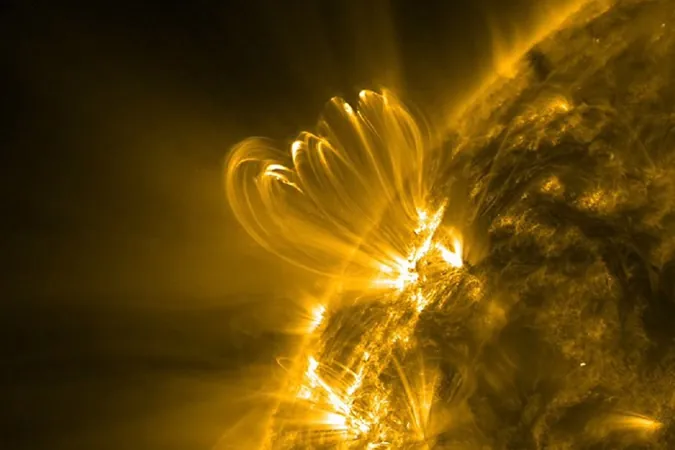
The Sun's Mysterious Flicker: A Game-Changer in Predicting Solar Flares!
2025-01-19
Author: Wei Ling
Introduction
Recent discoveries about the Sun's behavior could revolutionize how we understand and predict solar flares—those intense explosions of electromagnetic energy that can wreak havoc on Earth. Although solar flares can unleash energy strong enough to impact our atmosphere, forecasting these cosmic events is far from straightforward.
Groundbreaking Research
A groundbreaking study led by heliophysicist Emily Mason and her team from Predictive Sciences Inc. has unveiled intriguing insights into the Sun’s behavior before it unleashes solar flares. This research, published in the prestigious Astrophysical Journal Letters and showcased at the American Astronomical Society meeting, offers hope for better predicting these explosive events that can pose significant risks to astronauts and critical space infrastructure.
Significance of Predictions
Why is this significant? Solar flares can disrupt satellite operations, interfere with GPS systems, and even cause blackouts in power grids. The potential radiation exposure for astronauts during a flare makes accurate predictions vital for their safety. A reliable warning system could transform our defensive strategies against the unpredictable nature of space weather.
Research Methodology and Findings
Mason and her team's research utilized data from NASA’s Solar Dynamics Observatory to analyze coronal loops—structures in the Sun’s outer atmosphere. They focused on 50 intense solar flares and made a remarkable observation: the brightness of these coronal loops showed erratic flickering before a flare, an indicator that could serve as a warning signal. They found that this peculiar behavior was much more pronounced in active regions of the Sun, significantly outperforming previous monitoring techniques.
Quote from Mason
“We discovered that the flickering of extreme ultraviolet light in the vicinity of active regions precedes solar flares by a few hours,” Mason revealed. Such data could enable predictions of impending solar flares with a remarkable 60 to 80 percent accuracy—an impressive improvement over earlier forecasting methods.
Unique Nature of Solar Flares
Kara Kniezewski, the co-lead from the Air Force Institute of Technology, emphasized the uniqueness of each solar flare, likening them to snowflakes. By recognizing 'chaotic' flickering patterns in coronal loops, the team has established a more consistent measurement for solar flare predictions.
Future Developments
Moreover, Vadim Uritsky from NASA's Goddard Space Flight Center expressed optimism about developing a straightforward solar flare prediction system based on these findings. He envisions a streamlined indicator, allowing swift adaptation in operational settings.
Conclusion
As scientists continue their quest to unlock the mysterious behaviors of our Sun, this recent study offers a tantalizing glimpse into a potential new era of solar flare forecasting. If these findings are validated, coronal loop flickering could serve as an early warning signal for impending solar disasters, safeguarding our technology and protecting human lives in orbit. In a world increasingly reliant on satellite communications and space exploration, understanding the Sun’s frenetic activity is not just a fascination for scientists—it's a necessity for humanity's progress in navigating the cosmos! Stay tuned, as this groundbreaking research may hold the key to a safer and more informed journey into our solar system.

 Brasil (PT)
Brasil (PT)
 Canada (EN)
Canada (EN)
 Chile (ES)
Chile (ES)
 Česko (CS)
Česko (CS)
 대한민국 (KO)
대한민국 (KO)
 España (ES)
España (ES)
 France (FR)
France (FR)
 Hong Kong (EN)
Hong Kong (EN)
 Italia (IT)
Italia (IT)
 日本 (JA)
日本 (JA)
 Magyarország (HU)
Magyarország (HU)
 Norge (NO)
Norge (NO)
 Polska (PL)
Polska (PL)
 Schweiz (DE)
Schweiz (DE)
 Singapore (EN)
Singapore (EN)
 Sverige (SV)
Sverige (SV)
 Suomi (FI)
Suomi (FI)
 Türkiye (TR)
Türkiye (TR)
 الإمارات العربية المتحدة (AR)
الإمارات العربية المتحدة (AR)